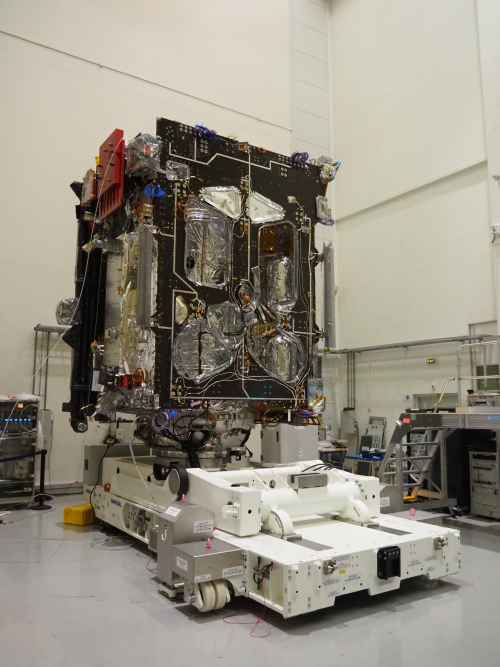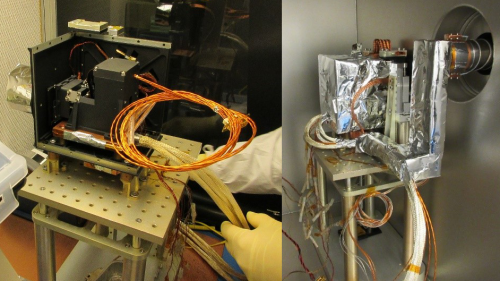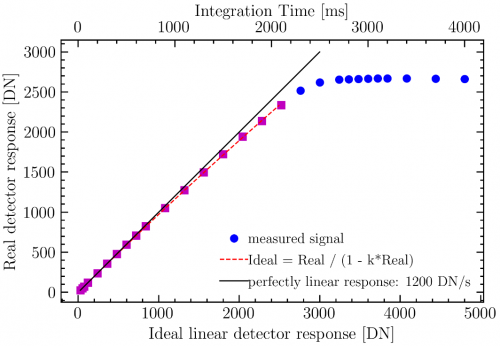The MAJIS/JUICE project
The JUICE spacecraft was developed by ESA and industrial partners for interplanetary exploration (ESA’s Cosmic Vision program). JUICE will study the Jovian system for a better knowledge on the solar system and the conditions for planet formation and emergence of life.
The spectro imager MAJIS onboard JUICE is one of the key instruments to address these research themes. MAJIS has been developed under the scientific responsibility of the Institute of Space Astrophysics (IAS, France). MAJIS presents two channels (VIS-NIR and IR) covering the range from 0.5 µm to 5.54 µm that integrated very sensitive equipment: the detectors.
The pre-flight characterisation of a detector plays a crucial role in the success of a space mission. The objective is:
- to qualify this device in simulated space conditions
- to radiometrically characterize it to define how to convert raw electronic signal into high-quality scientific data.
In 2020, the Belgian Radiometric Characterization Laboratory (B.RCLab) integrated in BIRA-IASB received the responsibility to characterize radiometrically the flight model detector of the VIS-NIR channel. A campaign has been organized in 2021 to duplicate this high level work on the spare detector. The purpose of it is to replace the flight model in case of problems before launch.
The VIS-NIR facility for detector characterization
NIR detectors operation are nominal under vacuum, at cryogenic temperatures. For a full characterization in a tightly controlled environment our facility provides a vacuum chamber coupled to a cryostat (temperatures from 95 K to 160 K).
The MAJIS detector, integrated in a protective mount, was exposed to well-calibrated light flux using radiometric equipment (light source, double monochromator, integrating sphere, calibrated photodiodes, etc.). Reliable software and security systems controlled the automation of the bench and the integrity of the detector.
The SM detector campaign
The following intrinsic properties of the MAJIS VIS-NIR SM detector (in dark and under illumination) were characterized:
- inter-pixel response uniformity
- linearity
- quantum efficiency
- saturation level
- various properties of its electronics.
The pictures illustrate the handling of the detector during the SM campaign.
The complete analysis of the SM detector's performance, including data processing and publication of the results, was the responsibility of the B.RCLab.
This measurement campaign allowed the team to acquire certified experience for the characterization of matrix detectors. It is an added value for future contributions to other space projects.
Reference
Pereira, N.; Cisneros-Gonzaléz, M.; Bolsée, D.; Van Laeken, L.; Vandaele, A. C.; Gissot, S.; Langevin, Y.; Haffoud, P.; Poulet, F.; MAJIS VIS-NIR channel: performances of the spare model focal plane unit, Proceedings of SPIE Vol 12180, 121803l-1, 2022. https://doi.org/10.1117/12.2642675



